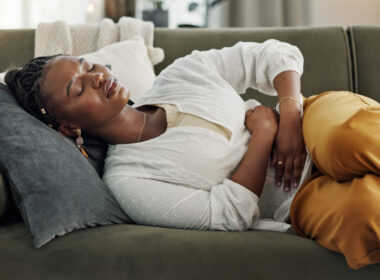In the process of writing my PhD dissertation about how young women’s overall health and wellness impact the lives of the children they conceive years down the road, I conducted 32 in-depth interviews and 10 focus groups with female college students. I found that good nutrition was tough for these young women to get on campus, and that they had difficulty finding time in their schedules for adequate exercise. These things didn’t surprise me. But I also learned about something I was not expecting: the negative toll of hookup culture. I could readily see that the young college women I was teaching were being damaged far more by this culture of casual sex than by the environment of bad food and inadequate exercise. The sheer amount of heartache and heartbreak I witnessed was heartrending. How could young men treat these young women so badly?
As I recognized the significant fallout from hookup culture, my PhD research focus shifted from standard women’s health and wellness to women’s health and sexual wellness. I learned much about what is behind this sexual conflict between men and women, and I want to share some of it with you today (and in more articles to come).
The hypothalamus and the difference between male and female sex drives
First of all, there are significant biologically-based sex differences between men and women. This is especially true in what I call the seat of human sexuality, the hypothalamus. Men have a sexual pursuit area of the hypothalamus that is more than twice as large as women’s [1]. This area in male brains is stuffed with two times more cells, and is very sensitive to testosterone stimulation, because it has far more receptors than the same area in the female brain does. Men, on average, have more than 10 times as much testosterone as women, and some even have up to 183 times more than women, which directly impacts their sex drive (making it much higher, on average, than women’s).
What’s more, compared to women, a much higher proportion of male testosterone is free and able to affect cells and, consequently, behavior. In contrast, women have much higher levels of Sex Hormone Binding Globulin (SHBG) than men do, which acts to bind much of their testosterone, making it less usable in the body (and meaning it has less of an effect on women than it does on men). These are just a few of the foundational differences that naturally shape much of males’ and females’ different levels of interest in, and motivation for, impersonal or casual sex.
What’s happening in the amygdala during sex, and how does it impact male openness to casual sex?
Not only are there profound differences in male vs. female hypothalamus architecture and chemistry, the two sexes differ in the structure and function of the brain’s survival command-and-control center: the amygdala. As with the hypothalamus, the average male amygdala is over twice as large as the average female amygdala, and is more reactive to sexual stimuli [2]. In contrast, the female amygdala is more reactive to food stimuli [3].
The difference in male vs. female amygdalas tends to manifest in sex differences in attitudes towards casual sex and sex drive, and appears to make men vulnerable to the “Coolidge Effect,” in which they show a greater preference for variety in sexual relationships than women do [4][5][6]. Additionally, when men are in an aroused state, they become more willing to go against their ethical beliefs and tell women they love them when they don’t, give them a date rape drug, or use other types of deceit to sleep with them [7].
After I began researching the sex differences in men and women’s sexual brain anatomy and hormones, and the resulting motivation for casual sex that many young men display, the heartache and heartbreak of the young college women in my interviews and focus groups started to make sense to me (even if I still found these young men’s actions deplorable).
Casual sex is less physically pleasurable for young women, and makes them feel “used”
Hookup culture goes against the average woman’s sexual nature. In this older study from 1995, when females took part in hookups, they tended to feel emotionally vulnerable afterward and to have anxious thoughts about their partner’s willingness to invest in the relationship [8]. Young women who wanted more commitment than their partners were willing to give tended to experience feelings of distress, degradation, and exploitation. Worse still, going on to have more meaningless sex with other partners did not relieve their emotional distress.
Newer research similarly shows that women are significantly more negative and less positive than men about hooking up, have greater regret about it, and are more likely to feel “used”[9].
Casual sex is also less physically pleasurable for young women than sex inside a committed, long-term relationship. Research shows that women are more likely to experience orgasm when they are in a serious relationship. In fact, this study found that casual sex (such as a one-night stand) might never lead to a real orgasm for women! It’s little wonder, then, that when women do take part in casual sex, they usually aren’t as happy with the outcomes.
Double standard: What men are looking for in short-term vs. long-term sexual relationships
Tragically, young women have shared with me that they have been told by people—and in some cases those people have been their parents—that these days, if you don’t have sex with a guy on dates, then you will never get a man to marry you. From my research and experience, nothing could be further from the truth. Men don’t assess women for short-term and long-term relationships the same way women do.
Interestingly, a woman generally looks for the same things in a man for both short-term and long-term relationships. The same is not true for the average man, who tends to look for different things in a woman, depending on whether he is seeking out a short-term or long-term relationship.
So what are men looking for in casual sexual partners? Men who are looking for short-term relationships, or even just for casual sex without any kind of relationship, are not drawn to women who withhold sex. With short-term partners, these men look for women who are sexually experienced.
On the other hand, men greatly dislike promiscuity or indiscriminate sexual activity in a potential wife or committed long-term partner. [10] When rating a date as a possible future wife, men rated the following behaviors as highly desirable out of 130 acts of attraction (attractive behaviors important to men seeking a marriage partner): remaining faithful, avoiding sex with other men, and showing devotion. In other words, they pretty much look for the opposite type of women they might seek out for a casual sexual encounter when looking for a lifelong partner.
Seems a bit outrageous, doesn’t it? And the double standard doesn’t stop there. While most women experience increased feelings of love and commitment following first-time intercourse with a man, if that man has a high number of previous sex partners, then he is more likely to experience a decrease in his rating of the woman’s physical and sexual attractiveness after having sex with her [11]. This can happen within 10 seconds after his orgasm!
Casual sex, particularly after orgasm, leads to different hormone release in men vs. women–with very different results in feelings about the relationship
Why might this immediate emotional detachment occur in men after casual sex? Let’s look at the difference in hormone release during sex, particularly after orgasm, in men vs. women.
During sex, women’s dopamine and oxytocin levels rise. At orgasm, a woman is flooded with oxytocin, and so she tends to bond strongly with the man she just had sex with, even if it’s only her first time with him. So while they may have intellectually planned on a no(emotional)-strings-attached one-night stand, biochemically, that may be an impossibility–for her.
Men, on the other hand, experience a rise in dopamine levels during sex, along with testosterone and vasopressin. They are less likely to experience the same oxytocin rush and consequential strong bonding that women tend to automatically have with orgasm, unless circumstances are just right.
What are those circumstances and what makes men fall in love differently than women fall in love? I will answer that burning biochemical question in a separate article–so stay tuned.
References:
[1] Swaab, D F et al. “Structural and functional sex differences in the human hypothalamus.” Hormones and behavior vol. 40,2 (2001): 93-8. doi:10.1006/hbeh.2001.1682 [2] Hamann, Stephan et al. “Men and women differ in amygdala response to visual sexual stimuli.” Nature neuroscience vol. 7,4 (2004): 411-6. doi:10.1038/nn1208 [3] Wang, Gene-Jack et al. “Evidence of gender differences in the ability to inhibit brain activation elicited by food stimulation.” Proceedings of the National Academy of Sciences of the United States of America vol. 106,4 (2009): 1249-54. doi:10.1073/pnas.0807423106 [4] Oliver, M. B., & Hyde, J. S. (1993). Gender differences in sexuality: A meta-analysis. Psychological Bulletin, 114(1), 29–51. https://doi.org/10.1037/0033-2909.114.1.29 [5] Lippa, Richard A. “Sex differences in sex drive, sociosexuality, and height across 53 nations: testing evolutionary and social structural theories.” Archives of sexual behavior vol. 38,5 (2009): 631-51. doi:10.1007/s10508-007-9242-8 [6] Hughes, Susan M et al. “Experimental Evidence for Sex Differences in Sexual Variety Preferences: Support for the Coolidge Effect in Humans.” Archives of sexual behavior vol. 50,2 (2021): 495-509. doi:10.1007/s10508-020-01730-x [7] Ariely Dan, Loewenstein George. “The heat of the moment: The effect of sexual arousal on sexual decision making.” J. Behav. Dec. Making, vol. 19 (2006): pp. 87-98. DOI: 10.1002/bdm.501 [8] Townsend, J M. “Sex without emotional involvement: an evolutionary interpretation of sex differences.” Archives of sexual behavior vol. 24,2 (1995): 173-206. doi:10.1007/BF01541580 [9] Campbell, Anne. “The Morning after the Night Before : Affective Reactions to One-Night Stands among Mated and Unmated Women and Men.” Human nature (Hawthorne, N.Y.) vol. 19,2 (2008): 157-73. doi:10.1007/s12110-008-9036-2 [10] Buss, D M, and D P Schmitt. “Sexual strategies theory: an evolutionary perspective on human mating.” Psychological review vol. 100,2 (1993): 204-32. doi:10.1037/0033-295x.100.2.204 [11] Buss, D M, and M G Haseltonu. “The affective shift hypothesis: The functions of emotional changes following sexual intercourse.” Personal Relationships, vol. 8, iss. 4 (2005): pp. 357-69. https://doi.org/10.1111/j.1475-6811.2001.tb00045.xAdditional Reading:
The “Love Hormone”: What does oxytocin do for us?
3 essential components of the female orgasm
How to have difficult conversations about sex
What to do when fertility awareness isn’t a “magic pill” for a great sex life








Hi, if you want men to read and take your article seriously then I suggest not being sexist? The fact you assumed that it was the college boys fault for the girls having heartbreak is extremely narrow minded and stereotyping. How do you know it wasn’t the girls fault for their own heartbreak? How do you know that the girls didn’t just make dumb decisions with their relationships and ruin things themselves? Like you call these college boys actions “deplorable” when I’m reality half the girls their age sell their body online, so who’s really deplorable? Hookup culture isn’t created by men, men have always wanted a hookup culture; it’s created by women. Women are the ones who control the sex, they are the ones who give consent, they are the ones who get pursued, so if there’s anyone to blame for crappy hookup culture, it’s girls. But it’s ok, you just keep doing what most women do and blame men for all problems.
Hi Erik! Thanks for your comment. Natural Womanhood believes that both men and women are responsible for hook-up culture (and, more broadly, for the sexual revolution), and that we’re all bearing the brunt of its fallout. That’s why we advocate for a fertility awareness-minded approach to sexuality, that recognizes the truth that sex is so much more than the recreational activity we’ve been made to believe–and that biological differences between the sexes make for important distinctions in the way men and women feel about sex. Studies show that the most satisfying relationships come from committed (more specifically, married) partners recognizing that sex and all of its consequences are a shared endeavor for which both the man and the woman share full responsibility.
Erik, stop it. The author is providing information that is from many studies and research generally true for the genders. There are exceptions and different motivations for different people.